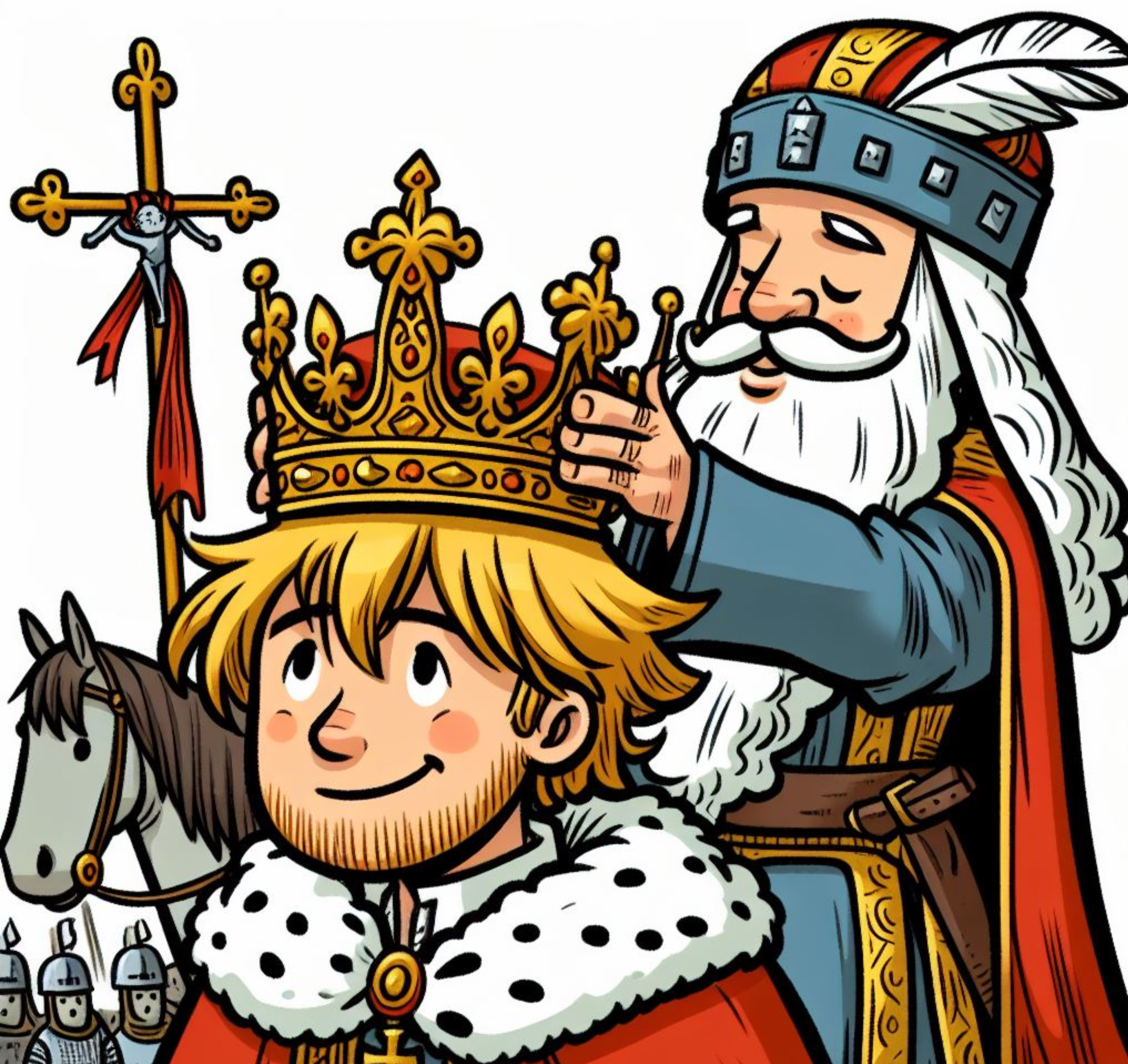Table of Contents
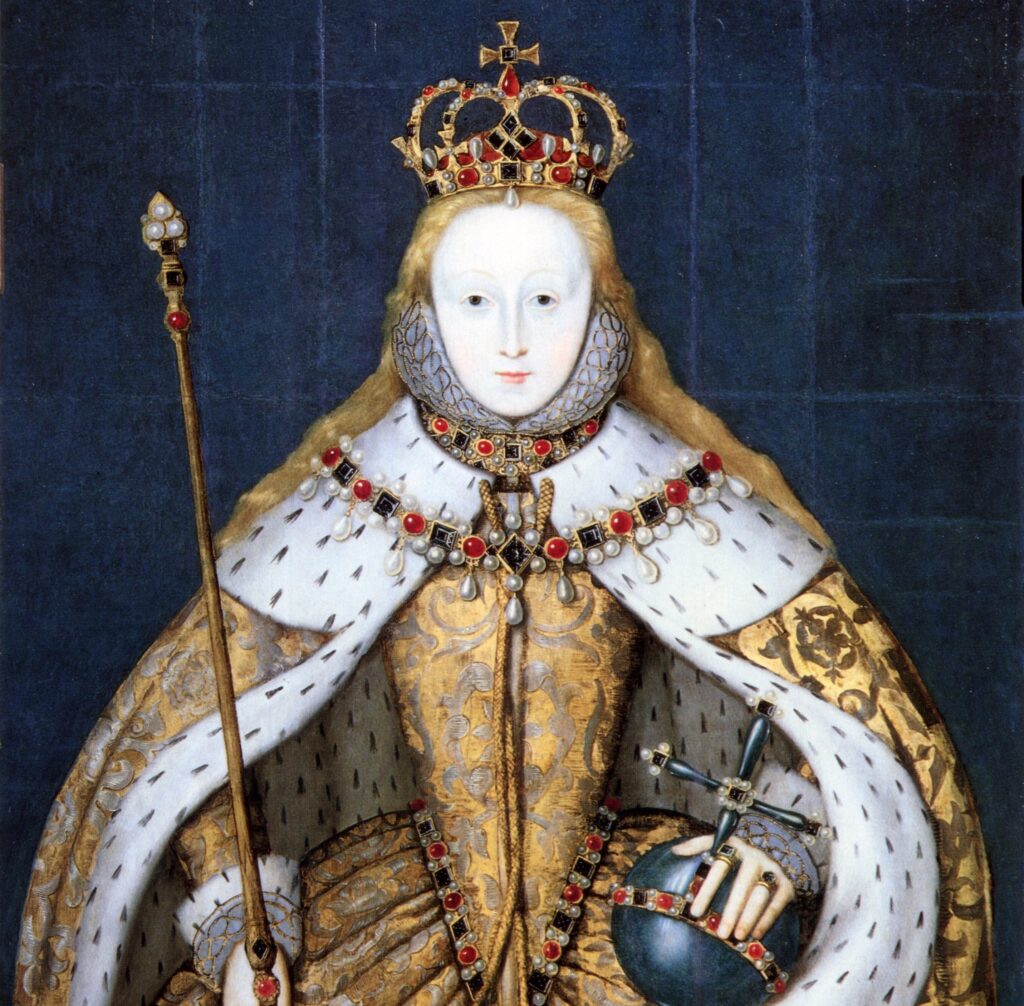
The Tudors were a famous family of kings and queens who ruled England and Wales between 1485 and 1603. Let’s find out some interesting stories about their coronations.
In 1485 a man called Henry Tudor defeated Richard III in the Battle of Bosworth. He was crowned King Henry VII and so began the 118-year reign of the Tudor family.
His son (also called Henry) went on to become Henry VIII, whose three children also eventually became monarchs – Edward VI, Mary I and Elizabeth I.
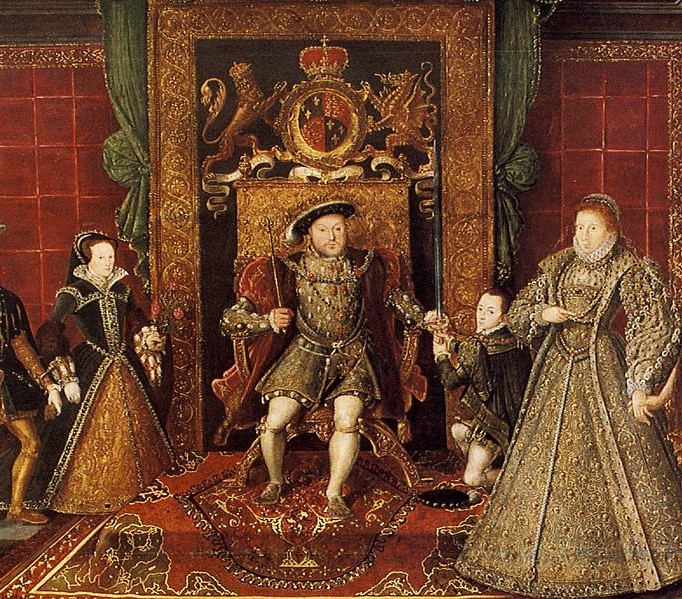
You might know Henry VIII for having six wives, Mary I for her nickname of ‘Bloody Mary’, or Elizabeth I for defeating the Spanish Armada. But what happened at the very start of their reigns, when they were first crowned at a special ceremony called a coronation?
Let’s find out some interesting stories about Tudor coronations …
HENRY VII – CROWNED ON THE Battlefield
Henry VII is the king who started it all – well, in terms of the Tudor dynasty. He won the throne by force, fighting against the king at the time, Richard III, at the Battle of Bosworth.
Despite being outnumbered, Henry defeated Richard and brought the Wars of the Roses to an end. This was a war that had lasted for almost 30 years, between two different families: the Houses of York and Lancaster.
After his victory, Henry declared himself king and was crowned on the battlefield using Richard’s crown. There’s a story that says the crown, thrown from Richard’s head during the fighting, was found in a thorn bush. I wonder if that’s true!
Fun fact: Henry VII was the last English king to win the crown through battle.

HENRY VII – a coronation WITHOUT A QUEEN
Henry also ended the Wars of the Roses by agreeing to marry Elizabeth of York. As Henry was Lancastrian, this brought together the two warring houses of York and Lancaster – and created the joint symbol of the Tudor rose.
However, when Henry was formally crowned at Westminster Abbey, the place of coronations since 1066, he did so without Elizabeth. She was a princess, the daughter of a previous king with a stronger claim to the throne than him. Henry didn’t want anyone to think his power came from her.
Elizabeth’s coronation finally happened two years after her husband’s, in 1487. But despite the delay (and their arranged marriage), Henry and Elizabeth are believed to have genuinely fallen in love!
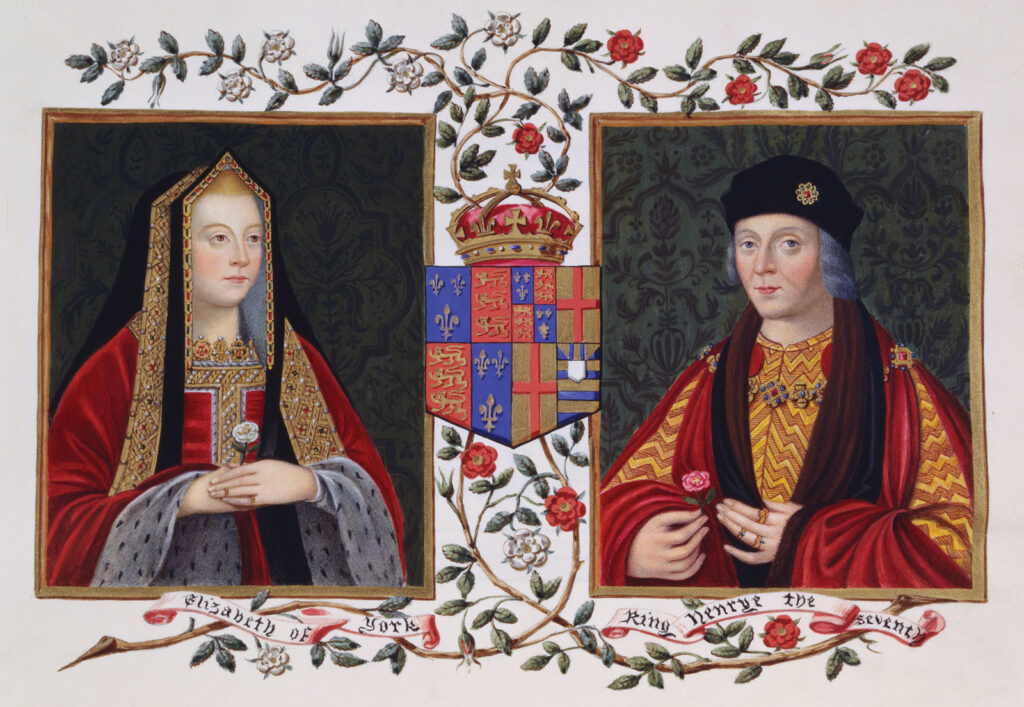
Anne Boleyn – the crown of monarchs
We all know that Henry VIII had six wives (divorced, beheaded, died anyone?). But did you know that only his first two wives were crowned: Katherine of Aragon and Anne Boleyn.
As queen consort, or the wife of a king, Anne wasn’t expected to have a lavish coronation of her own. However, hoping that she would give birth to a son, Henry splashed the cash.
Celebrations lasted for four days but even more surprisingly, Anne was crowned with St Edward’s Crown. This is the crown reserved only for monarchs – the king himself. I say king because at the time, if you can believe it, England had never had a queen in her own right.
To this day, Anne is the only queen consort crowned with St Edward’s Crown. And yet, almost exactly three years after her coronation, she was executed on the orders of her husband. So unfortunately it seems the fancy crown didn’t do her any good!
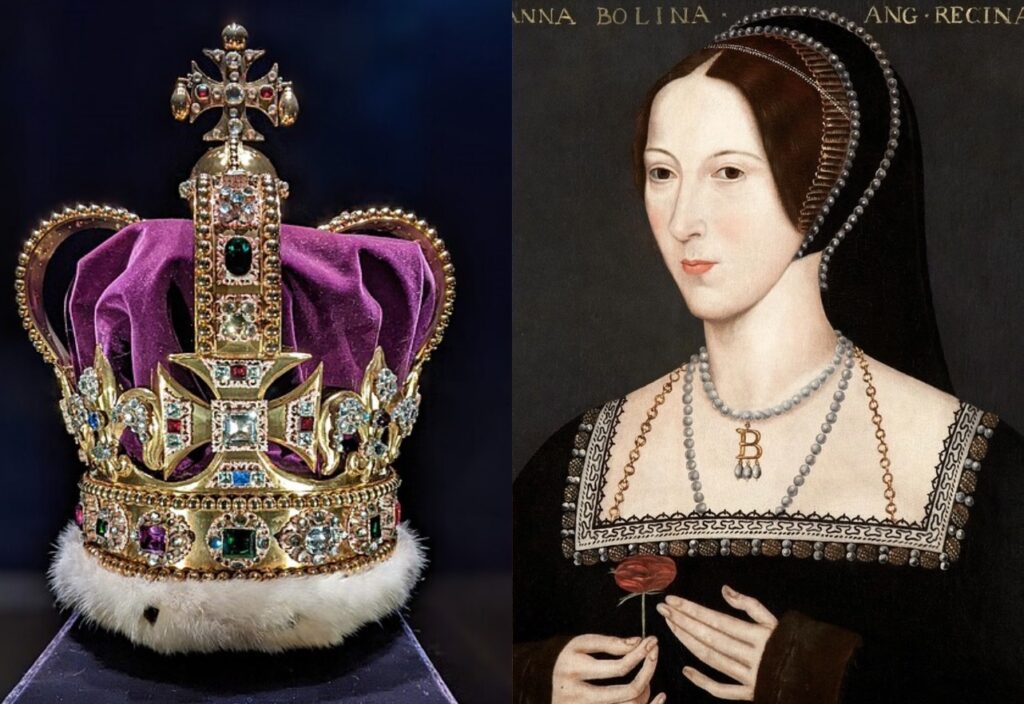
MARY I – refused to be crowned on the coronation chair
One thing the reign of the Tudors is known for is religious disagreement, to put it lightly! Once Henry VIII broke with the Catholic Church, there was lots of religious to-ing and fro-ing for years. It probably made everyone’s head spin.
Henry VIII’s son, Edward VI, was deeply Protestant. But he died when he was 15, and his Catholic sister Mary came to the throne in 1553.
Like all monarchs, Mary’s coronation was held in Westminster Abbey. But Mary believed that the coronation of her Protestant brother only a few years earlier had tainted the church. She had the whole Abbey scrubbed cleaned before her big day! Rude.
She also refused to be crowned on the ancient Coronation Chair, used at coronations since 1308, because she thought it might have been ‘polluted’ by Edward. It’s thought that a new chair was sent to her by the Pope (the head of the Catholic Church), though unfortunately it’s been lost to time.
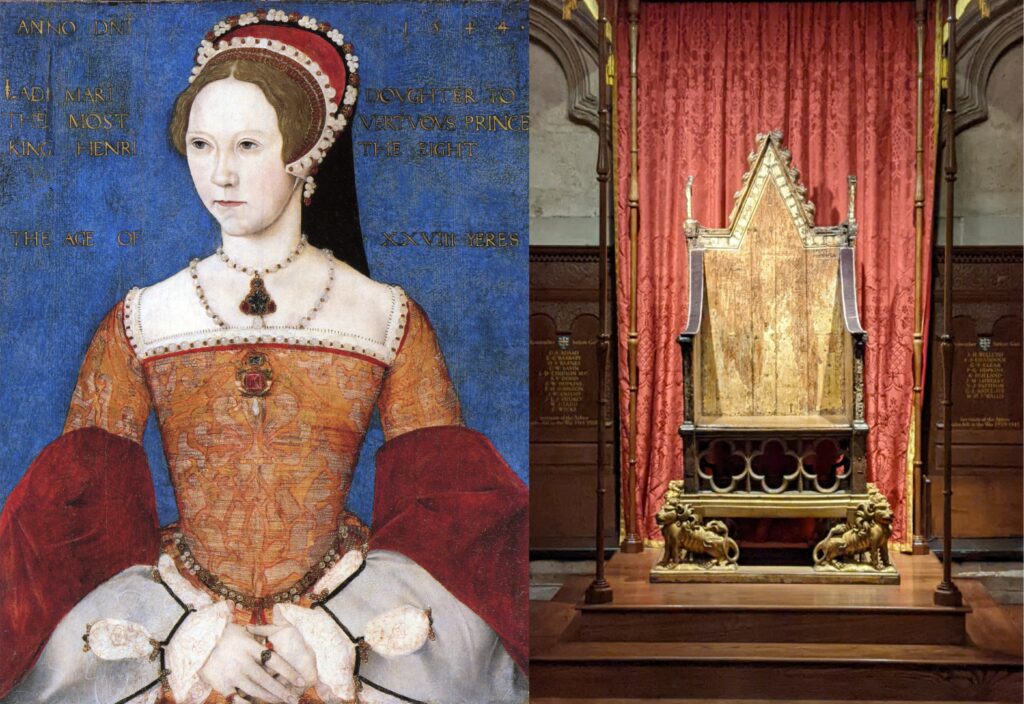
Mary i – raised herself up
Mary was also the first ever queen regnant of England. This means she was queen in her own right, not because she was the wife of a king. Maybe she wanted to remind people of that during her coronation, which sounds pretty sensible.
Like most monarchs, Mary had her throne placed in the Coronation Theatre of Westminster Abbey so everyone attending could see her. Unlike most monarchs, she had a very high platform built – so high, in fact, that she had to climb thirty steps to reach her throne. That’s more than two flights of stairs!
I imagine she was making sure all the guests were forced to look up at her, to remind them who was boss. What do you think?
ELIZABETH I – walked to her coronation
Directly opposite Westminster Abbey you can find the Houses of Parliament. But did you know that the official name for this building is the Palace of Westminster? And that for about 450 years it was a royal residence? In fact, it was during the reign of the Tudors that the royal family moved out.
It therefore might not surprise you to learn that monarchs, including Elizabeth, often travelled to their coronations from the Palace of Westminster. And since the distance is so short, Elizabeth simply walked across! She also returned back to the palace after her coronation for a fantastic feast.
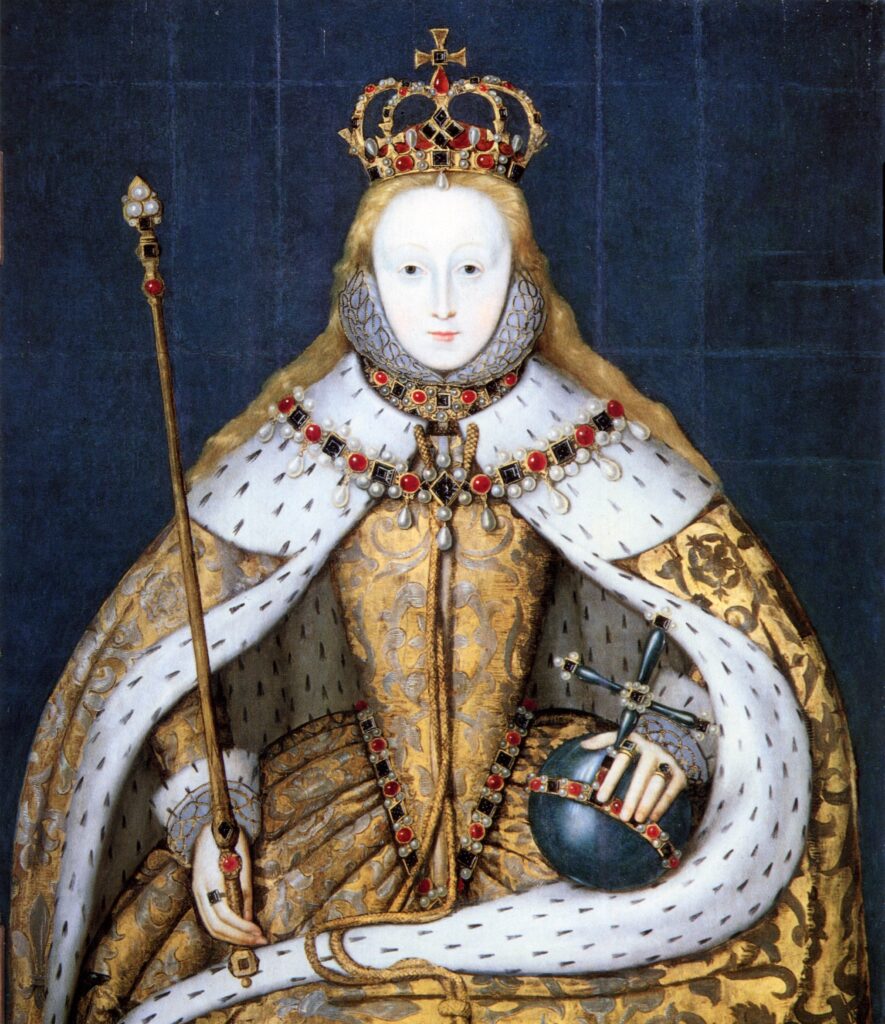
Elizabeth i – A DAY written in the stars
The date of Elizabeth’s coronation wasn’t a Christian holy day, which was common, but instead was decided by her court astrologer, John Dee. Elizabeth was interested in astrology and asked him to choose a day in which the stars and planets would be favourably aligned. Dee was a trusted counsellor and she believed in his powers.
Known by her subjects as ‘Gloriana’ and ‘Good Queen Bess,’ Elizabeth was queen for 44 years (between 1558 and 1603) and her reign is often described as a ‘Golden Age’ of English history. So maybe she was right to consult the stars.
On the other hand, Elizabeth (being Protestant) found it difficult to find someone to crown her amongst all the Catholic priests. In the end, the Bishop of Carlisle agreed, but this made the other bishops angry and he was said to have later died of regret! Awkward.
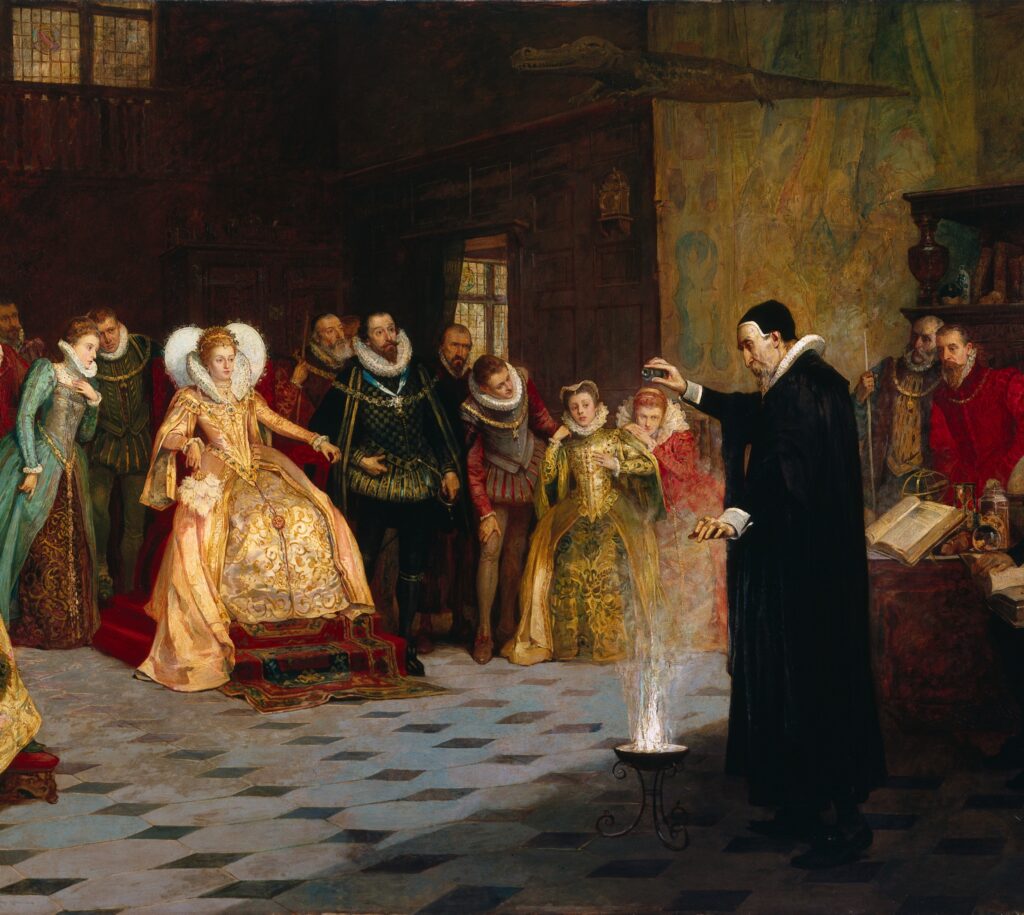
Elizabeth I was the last of the Tudor monarchs, but we can’t deny they were an interesting bunch with some fantastic coronation stories.
WHAT TO READ NEXT
Thank you so much for reading this Not-So-Romantic blog and I hope you’ve enjoyed it. If you have, here are some other blogs along a similar theme which I recommend you should read next:
